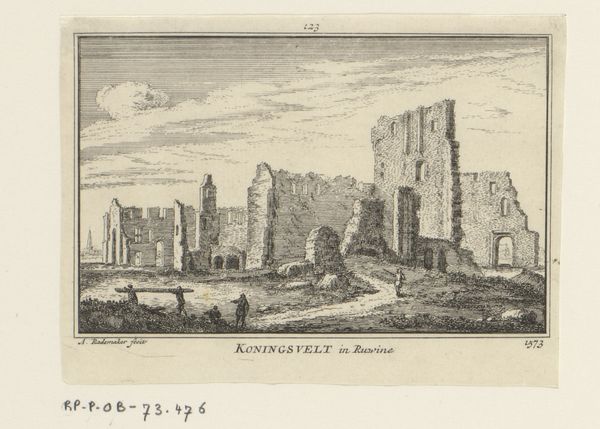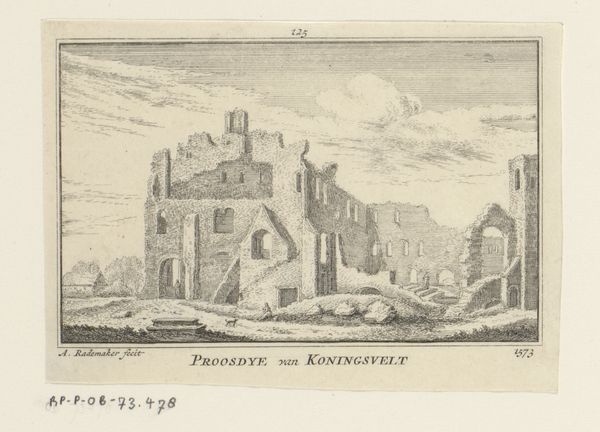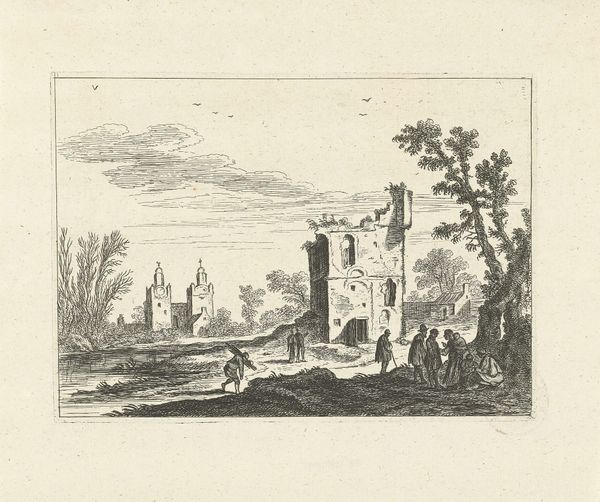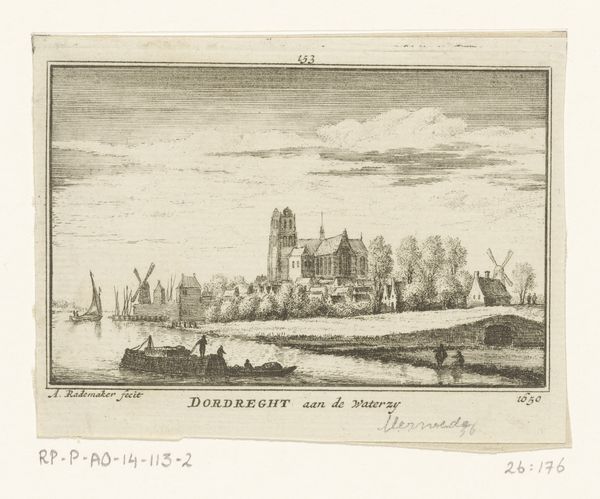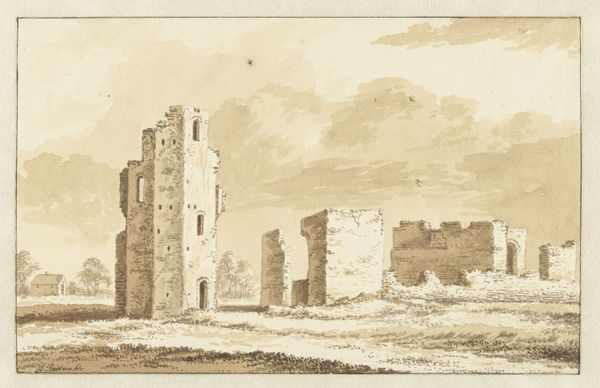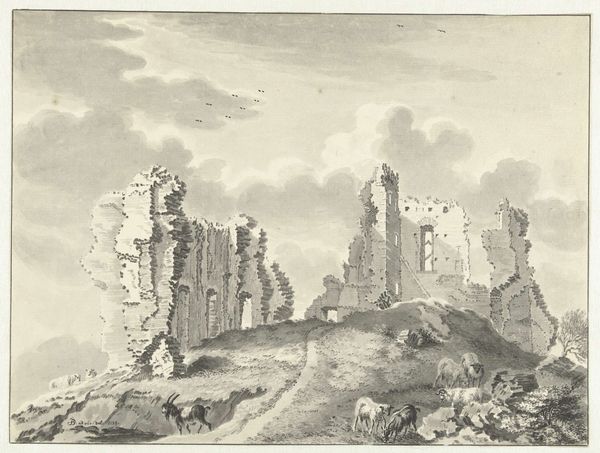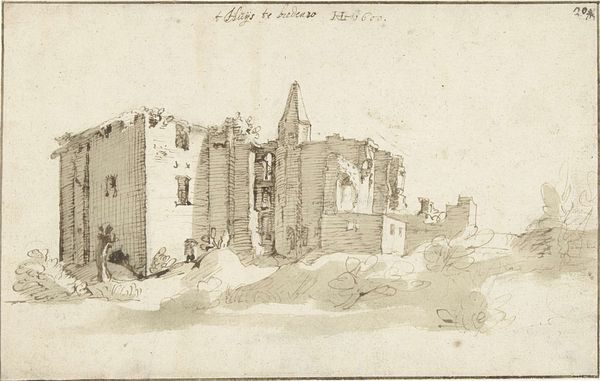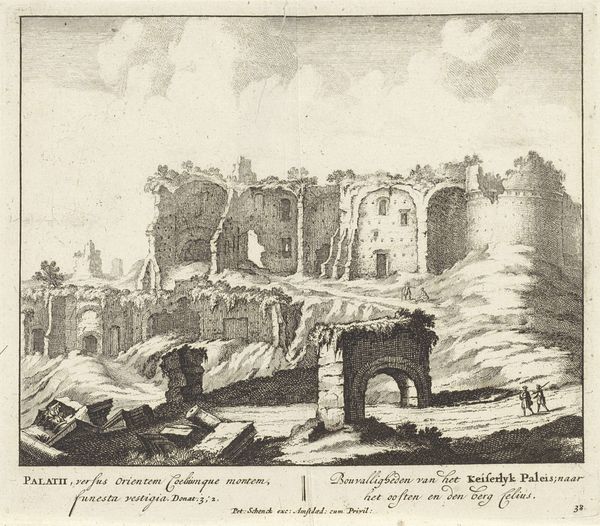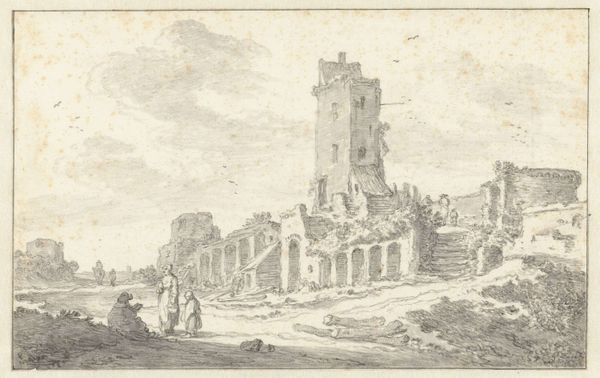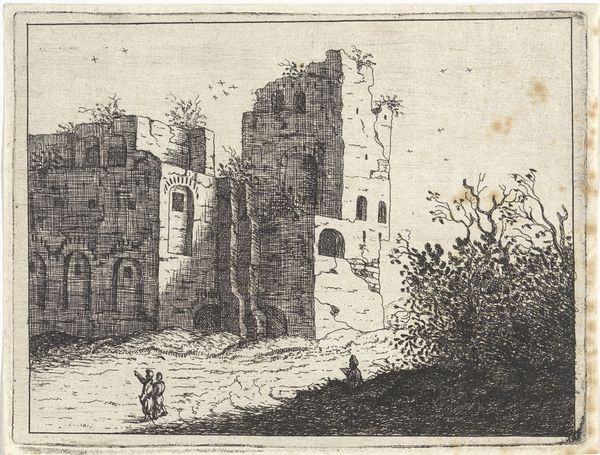
Gezicht op de ruïne van het kartuizerklooster bij Delft, 1573 1725 - 1803
0:00
0:00
Dimensions: height 84 mm, width 108 mm
Copyright: Rijks Museum: Open Domain
Abraham Rademaker made this etching of the ruined Carthusian monastery near Delft in 1573. But remember, Rademaker was born almost a century later! So while the image seems to represent the monastery in the 16th century, it's really a view filtered through the concerns of the 18th century. The ruin became a popular theme in Dutch Golden Age painting, alluding to the transience of earthly power and the triumph of Protestantism over Catholicism, particularly after the Reformation and the Eighty Years' War. The ruined monastery could be seen to represent the decline of Catholic authority in the Netherlands. By the 18th century, the ruin became a popular theme, signifying the importance of Dutch national history and the growing aesthetic taste for the sublime. The etching can tell us much about the shifting political and cultural meanings attached to the ruins. To understand this work better, we can research the history of the Carthusian order in Delft, the history of Dutch printmaking, and the political context of the Dutch Republic.
Comments
No comments
Be the first to comment and join the conversation on the ultimate creative platform.
